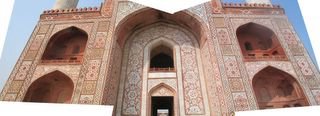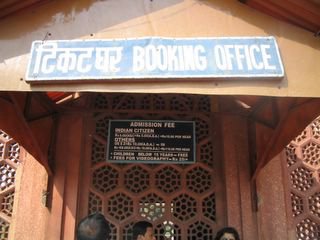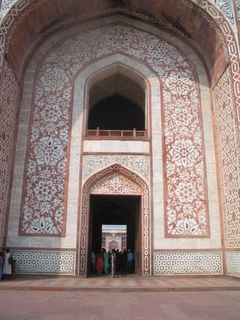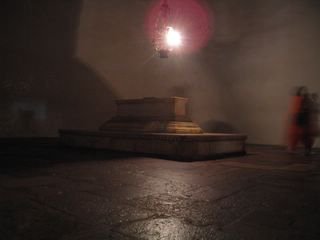Sikandra, the tomb of Akbar. Akbar was the third Mughal emperor (Babur and Humayun being the first and second).

The tomb was built over seven years, from 1605-12.

The entrance to the compound. The tomb at Sikandra is said to occupy a larger area than the Taj. And the compound is huge indeed.

Note the differential admission fee for Indians and foreign nationals.

The imposing entrance to the compound.

This is the tomb of Akbar - to get here you have to walk down a narrow and damp passage. Quite austere.

The entrance to the cenotaph can be seen in this photo. Some of the inlay work can be seen here; some of the inlay work used to be in gold, don't know if it still exists there or not.

© 2005, Abhinav Agarwal (अभिनव अग्रवाल). All rights reserved. Reposted to this blog, July 2013.

The tomb was built over seven years, from 1605-12.

The entrance to the compound. The tomb at Sikandra is said to occupy a larger area than the Taj. And the compound is huge indeed.

Note the differential admission fee for Indians and foreign nationals.

The imposing entrance to the compound.

This is the tomb of Akbar - to get here you have to walk down a narrow and damp passage. Quite austere.

The entrance to the cenotaph can be seen in this photo. Some of the inlay work can be seen here; some of the inlay work used to be in gold, don't know if it still exists there or not.

© 2005, Abhinav Agarwal (अभिनव अग्रवाल). All rights reserved. Reposted to this blog, July 2013.